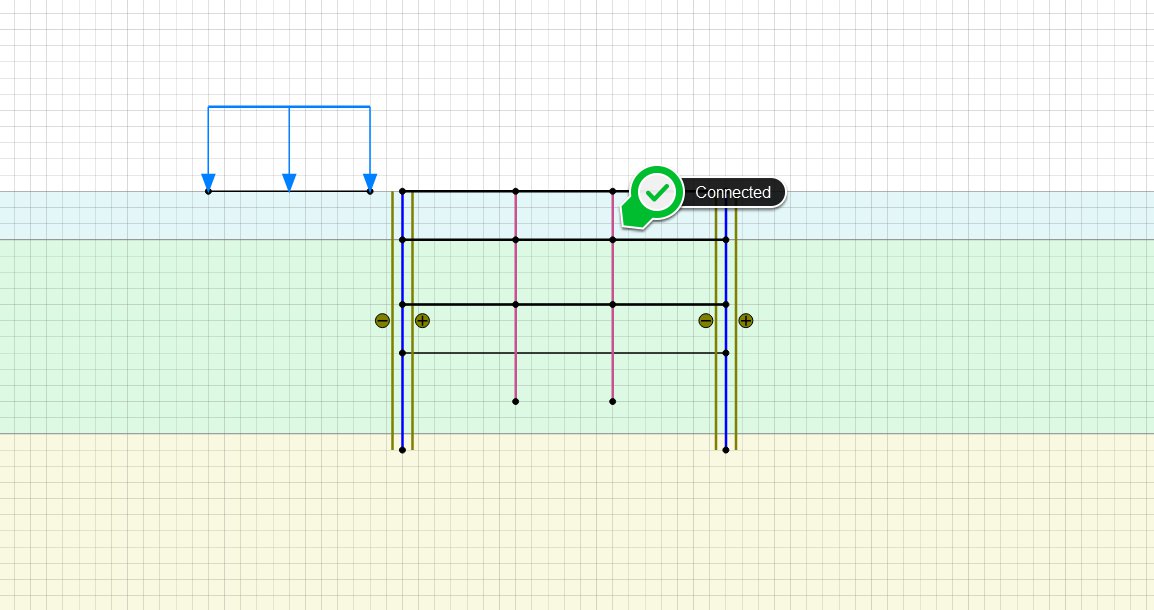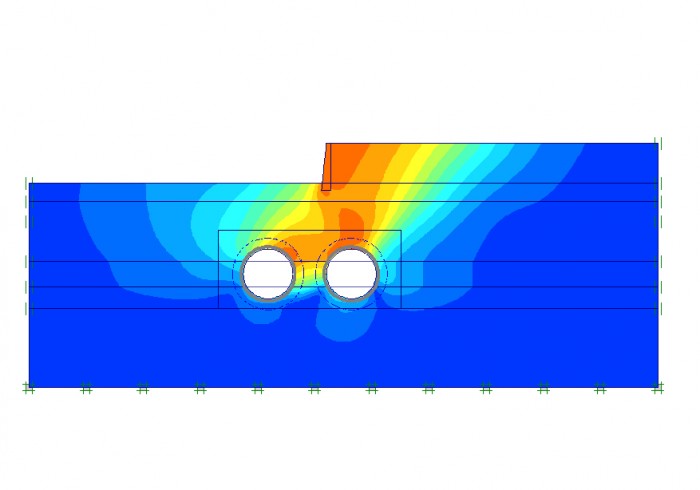
Since the distance between the point to be supported and the model boundary may be different than the desired equivalent length, a ‘scaling factor’ needs to be applied on the anchor stiffness in the corresponding material data set. The equivalent length of an FE anchor can be defined as an anchor property, whereas the equivalent length of an N2N anchor is the distance between the two geometry points to which the anchor is connected.Considering that the bottom boundary is used for the fixed point, the replacement of an FE anchor by an N2N anchor works best for a (primarily) vertical support. The direction of an FE anchor can be defined as an anchor property, whereas the direction of a N2N anchor is just its orientation in the geometry model.In the above example case, the vertical FE anchor could be replaced by a vertical N2N anchor with its lowest point connected to the bottom boundary. However, the second point may also be a fixed point at the model (bottom) boundary, which makes that the N2N anchor basically works as an FE anchor. N2N anchors form a spring connection between two geometry points. The way to overcome this limitation is to use None-to-Node (N2N) anchors instead of FE anchors. This would require two or more FE anchors to be applied at the same geometry point, which is currently not possible. However, in some situations, it may be required to fix a structure in different directions using spring supports, such as indicated in the figure below. PLAXIS 2D and 3D allow for only one FE anchor per geometry point.


Fixed-End (FE) anchors are single point spring elements that can be used to model anchors, struts and other types of ‘flexible’ supports.


 0 kommentar(er)
0 kommentar(er)
